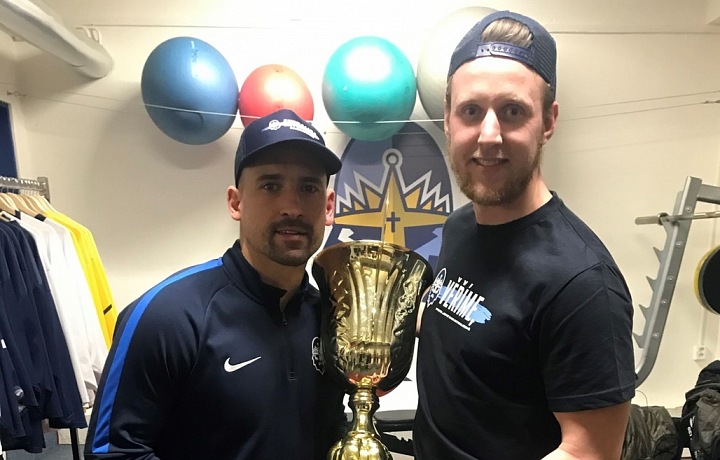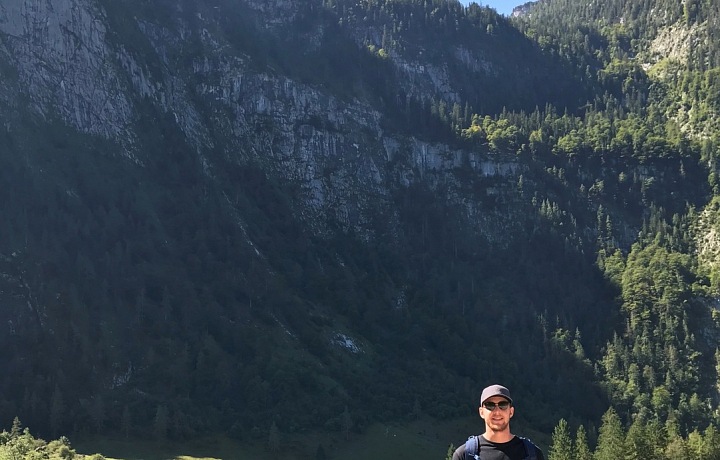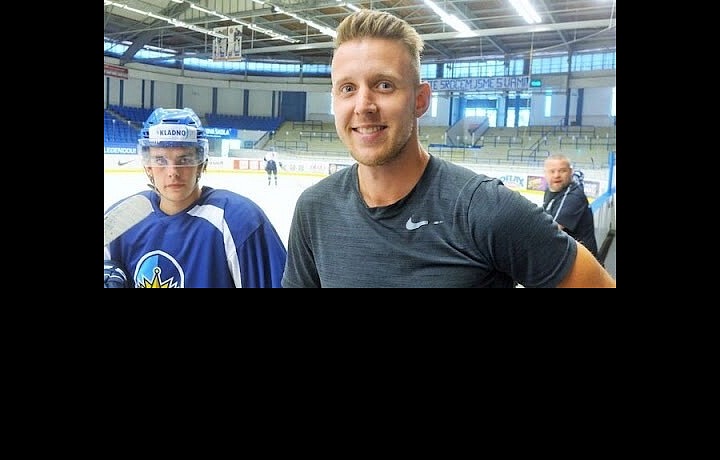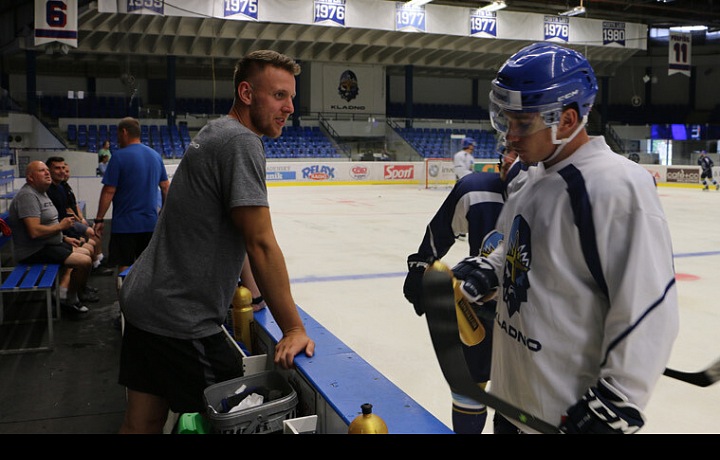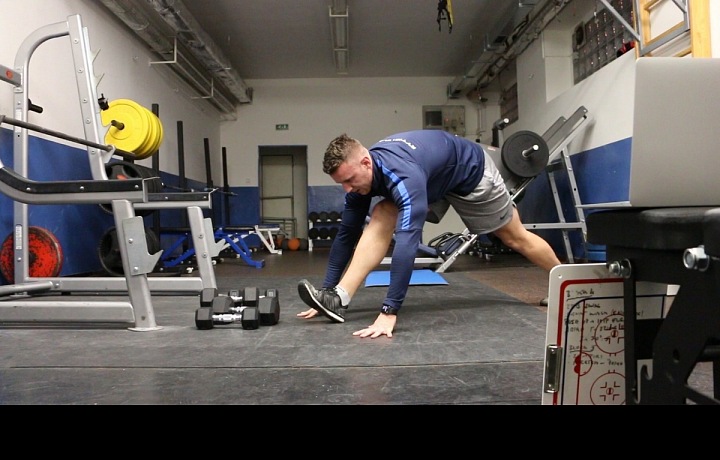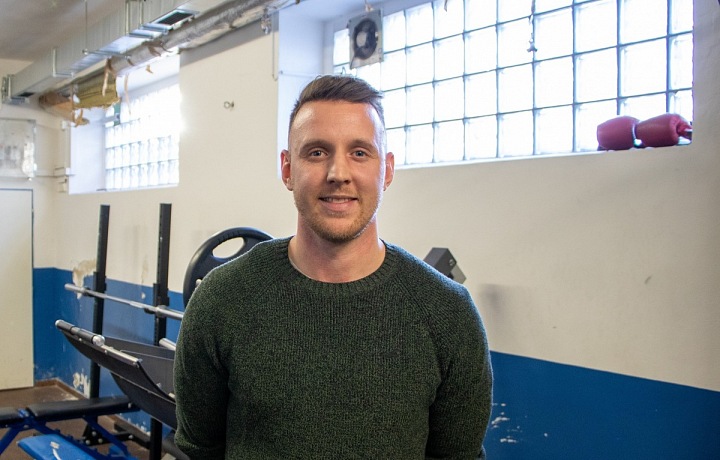Fast Confession - Rytíři Kladno (Kladno Knights) fitness trainer Michael Obrtel: Ammonia salt can give hockey players a kick of energy
It took three attempts for Michael Obrtel and me to meet. When I was trying to arrange the meeting, he was pretty busy. The Rytíři Kladno team had a series of important matches at that time, so they needed to have their fitness trainer by their side at all times. Thankfully, we managed to meet up eventually. In Michael’s interview for LP-Life.com, you can find a little background information about the Kladno hockey team and their physical training, as well as interesting facts detailing how this energetic and vigorous man got all the way from Kladno to Canada. Michael also spoke about the current training trends among world-class athletes, proper breathing and necessary relaxation. And he revealed what he admires about Jaromír Jágr.
You are the fitness coach of the Rytíři Kladno hockey club. How many seasons have you already had the Kladno players in your care and how did you end up here in Kladno out of all places?
This year, I’m wrapping up my fifth season in the realization team of the Rytíři Kladno and the journey that led me here started at the Faculty of Physical Education and Sports, where I completed my bachelor's and master's degrees. During my master's studies, I managed to get a six-year internship in Canada. When I came back, I was approached by coach Milan Hořava. And I've pretty much stayed here ever since.
Your job is to make sure that the Kladno hockey players are in the best possible physical condition. What is the current trend in this field, and what are the training sessions like?
Co se týká kondiční přípravy, tak tam je trendem to, i když se jedná o týmový sport, že se snažíme vše individualizovat pro jednotlivé hráče. Každý z nich má samozřejmě jiné limity, historie zranění, takže já se snažím tréninky co nejvíce přizpůsobovat hráčům na míru.
How did the coronavirus affect the regular regime of hockey players in relation to training? What changes had to take place?
Thinking back to last year, we actually had to go to the outdoor ice rink. So last year's training took place partly outside, because we couldn't be indoors. And as for the rest of the season, we were greatly affected by the fact that there were no spectators at the stadium. So playing matches was complicated. But the training process was completely different in general. Sometimes we were divided into groups because we had to abide by government regulations. But otherwise, except for the fact that we had to go to the outdoor ice rink, nothing changed.
The covid era has attacked, among other targets, an important organ of the human body: the lungs. How important are lungs for world-class athletes, specifically hockey players?
Ice hockey is a game where high physical demand alternates with lower demand. Of course, when the boys get back on the bench, I’d say they need a decent lung capacity in those 30 to 45 seconds. And they need to be able to put it to good use so that they can move on the ice. At the same time, it is important that they can breathe it all out when they sit down again. So the lungs are, naturally, an important organ for hockey players.
How do you motivate players to breathe so that their lungs would gain the best possible capacity?
Rather, the capacity can be influenced by regular exercise, which, for us, means training on the ice. If someone has a slightly lower lung capacity, I can help them put in some extra training on dry land. I also try to motivate the boys to exercise even if they’re not on the ice. Any regular exercise is good. Walking, running, cycling… Because any kind of exercise has a positive effect on lung capacity.
How does the capacity of the player's lungs affect their performance as such? How does it manifest itself during the match?
I’m going to follow up on what I’ve already said, because lung capacity is extremely important, but being able to put it to good use is just as crucial. The capacity of the player's lungs is closely connected to their ability to breathe properly, by which I mean specifically knowing how to achieve the "breathing wave." That’s not an easy feat, of course. It is quite complicated and one has to start learning it in the resting position. But once you’re familiar with the practice, breathing economics is your first benefit during a match as well as in training.
What exactly is a "breathing wave"?
At first, you learn it lying down, and as you breathe in, the air goes into your stomach first, then into your chest and back. That's why it's called a "breathing wave." It's hard to get the feeling for it, you really have to focus. That’s why it’s best to employ one-on-one training techniques.
Hockey players often sniff ammonia, or rather ammonia salt, before getting on the ice after a while on the bench. What does it do to the body? It used to be a treatment for people who had fallen unconscious. What is it good for? Does this method help or rather cause harm?
It is currently the subject of research. Actually, a friend of mine from doctoral studies has been conducting research on it recently. He isn’t doing it for hockey players though, but for soldiers. They examined sleep deprivation and found that sniffing salt had no effect on performance or cognitive function. That means it’s still the subject of further research. I think it does give the nervous system some kind of kick, but it certainly has a placebo effect, too. It's like having a cup of coffee and hoping it would sort us out. I think it's the same. Sniffing salt also gives us a kick of energy, but it hasn’t yet been confirmed that it should boost one’s performance. That’s about it.
Do you have any experience with a situation where a top athlete has had breathing problems or any kind of serious lung problems due to overly high performance?
I don’t really have experience with anything like that. However, ice hockey, or rather the ice rink, is a specific environment and players have to breathe in it. By which I mean, we're not outside, there's no fresh air there and the temperature is around 0 °C, so it's a cold environment. Some players may develop a phenomenon called "hockey lungs" or have an asthma attack, but personally, I have never seen that happen.
Good breathing hygiene is also important for the relaxation and concentration of the organism, not only when giving top sports performances. Do you also train this type of breathing techniques with hockey players? And when should they be able to use them?
This actually brings us back to the question where we talked about breathing economics and the "breathing wave", which serves the players not only during exercise, but also during regeneration. It can therefore be used as a relaxation technique. It helps the players just as much during their time on the bench - if they spend a moment on deep breathing, they're fresh when they go back on ice.


